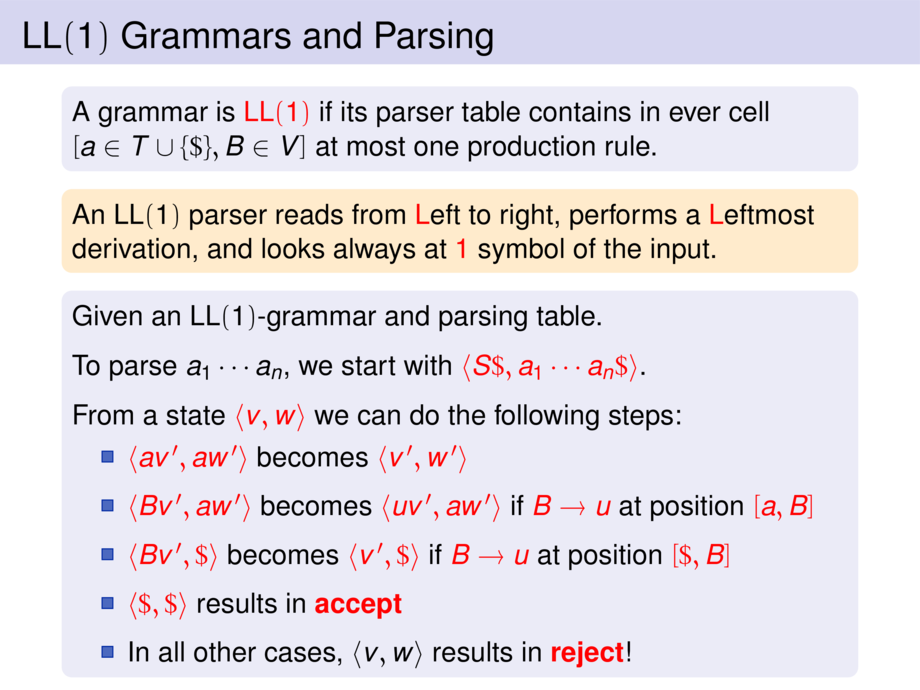



































































































102/136
\begin{frame}{LL$(1)$ Grammars and Parsing}
\begin{block}{}
A grammar is \alert{LL$(1)$} if its parser table contains in ever cell $[a \in T \cup \{\$\},B \in V]$
at most one production rule.
\end{block}
\pause
\begin{goal}{}
An LL$(1)$ parser reads from \alert{L}eft to right,
performs a \alert{L}eftmost derivation,
and looks always at \alert{1} symbol of the input.
\end{goal}
\pause
\begin{block}{}
Given an LL$(1)$-grammar and parsing table.
\pause\medskip
To parse $a_1\cdots a_n$, we start with \alert{$\langle S\$,a_1\cdots a_n\$\rangle$}.
\pause\medskip
From a state \alert{$\langle v,w\rangle$} %, met $v\in(V\cup T)^*\$$ and $w\in T^*\$$,
we can do the following steps:
\begin{itemize}
\pause
\item \alert{$\langle av',aw'\rangle$} becomes \alert{$\langle v',w'\rangle$}
\pause
\item \alert{$\langle Bv',aw'\rangle$} becomes \alert{$\langle uv',aw'\rangle$} if \alert{$B\to u$} at position \alert{$[a,B]$}
\pause
\item \alert{$\langle Bv',\$\rangle$} becomes \alert{$\langle v',\$\rangle$} if \alert{$B\to u$} at position \alert{$[\$,B]$}
\pause
\item \alert{$\langle\$,\$\rangle$} results in \alert{\emph{accept}}
\pause
\item In all other cases, $\langle v,w\rangle$ results in \alert{\emph{reject}}!
\end{itemize}
\end{block}
\end{frame}

